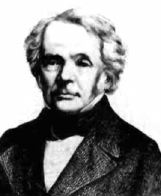

August Möbius was educated at home until he was 13, when, already showing an interest in mathematics, he went to the College in Schulpforta in 1803.
In 1809, he graduated from college and he became a student at the University of Leipzig. His family had wanted him study law and indeed he started
to study this topic. However he soon discovered that it was not a subject that gave him satisfaction, and therefore took up the study of mathematics, astronomy and physics.
The teacher who influenced Möbius most during this time was Karl Mollweide, an astromomer famous mathematically for the Mollweide trigonometric relations and the Mollweide map in complex analysis.
In 1813 Möbius travelled to Göttingen where he studied astronomy under Gauss, the greatest mathematician of his day.
In 1815 Möbius wrote his doctoral thesis on The occultation of fixed stars, and his
Habilitation thesis on Trigonometrical equations. He was appointed to the chair of astronomy and higher mechanics at the University of Leipzig in 1816.
However, Möbius did not receive quick promotion to full professor. It would appear that he was not a particularly good lecturer and this made his life difficult
since he did not attract fee paying students to his lectures. He was forced to advertise his lecture courses as being free of charge before students thought his
courses worth taking. By 1844 Möbius's reputation as a researcher led to an invitation from the University of Jena and at this stage the University of Leipzig gave him the Full
Professorship in astronomy which he clearly deserved.
From the time of his first appointment at Leipzig Möbius had also held the post of Observer at the Observatory at Leipzig. He was involved the rebuilding of
the Observatory and, from 1818 until 1821, he supervised the project. In 1848 he became director of the Observatory.
Although his most famous work is in mathematics, Möbius did publish important work on astronomy. He wrote a work concerning occultations of the planets. He also wrote on the principles of astronomy and on celestial mechanics.
Möbius's mathematical publications, although not always original, were effective and clear presentations. Almost all his work was published in Crelle's Journal, the first journal devoted exclusively to publishing mathematics. His 1827 work on analytical geometry became a classic and includes many of his results on projective and affine geometry. In it he introduced
homogeneous coordinates and also discussed geometric transformations, in particular projective transformations. He introduced a configuration now called a Möbius net, which was to play an important role in the development of projective geometry.
Möbius's name is attached to many other important mathematical objects such as the Möbius function, the Möbius band, and the Möbius inversion formula.
In 1837 he published a work which gives a geometric treatment of statics. It led to the study of systems of lines in space. He considered a variant of the Four Color Problem in 1840 illustrating Möbius's interest in topological ideas, an area in which he is most remembered
as a pioneer.